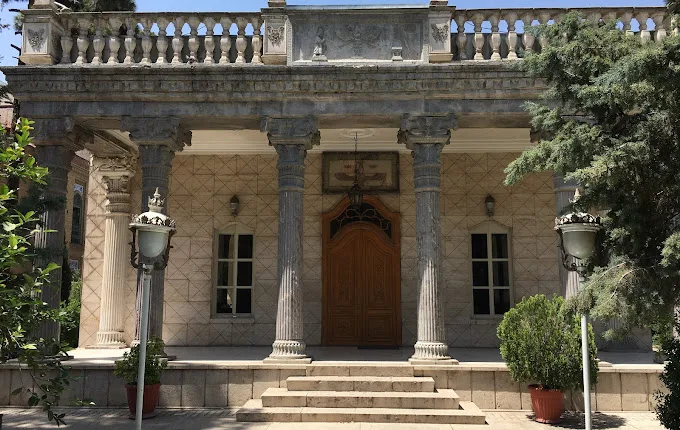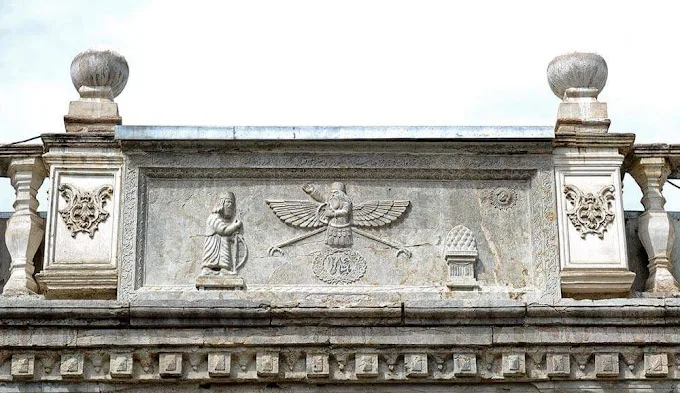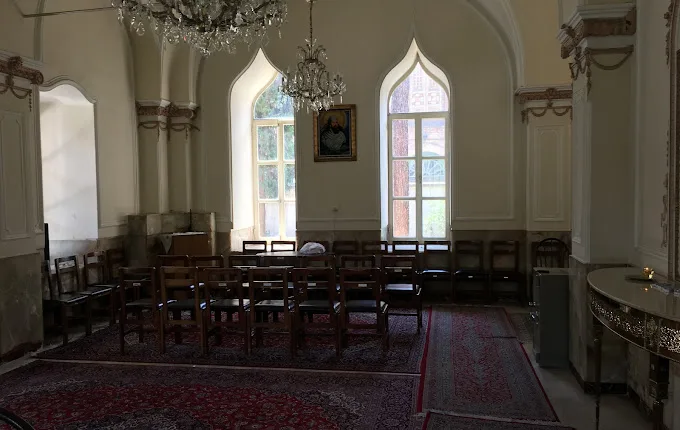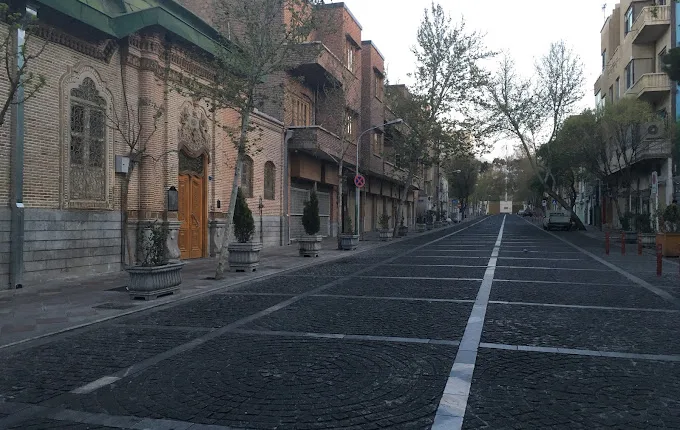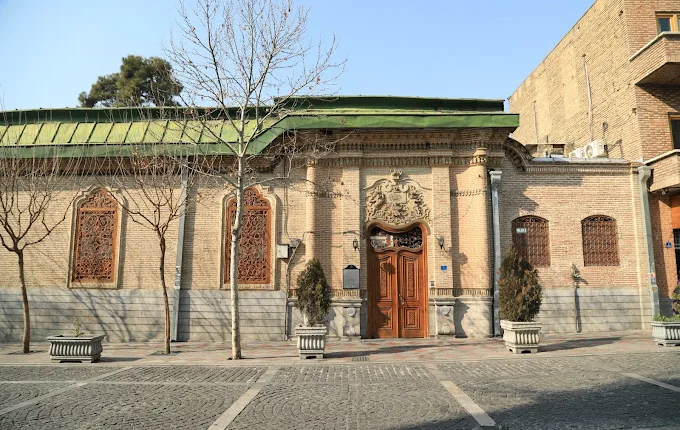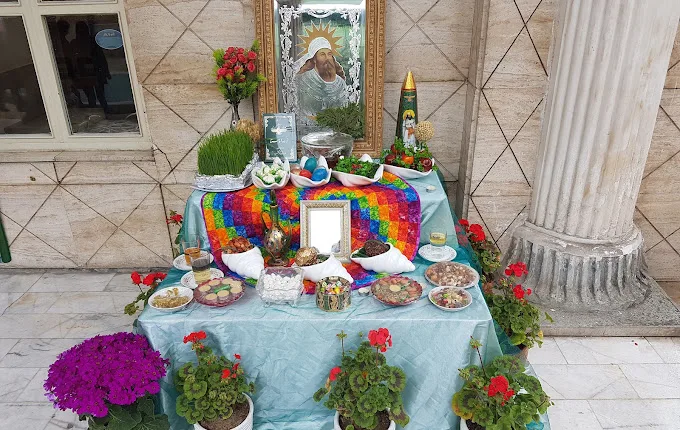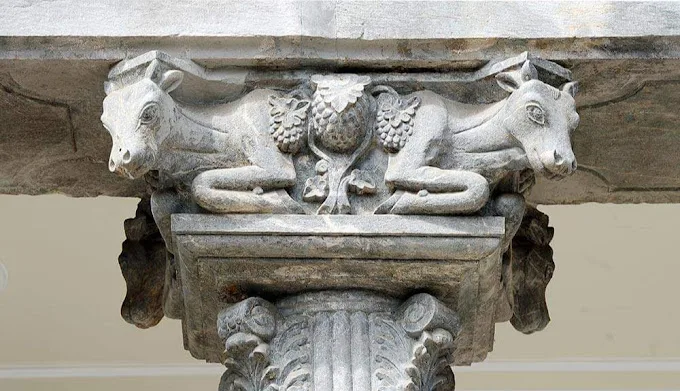Tehran Adorian Fire Temple
Tehran Adorian Fire Temple: A guide to the site
Have you ever had the pleasure of visiting a Zoroastrian Fire Temple? We’re going to take a virtual tour of one such architectural marvel located in Tehran, Iran. Called Tehran Adorian Fire Temple ( آتشکده آدوریان) in Persian, the site is steeped with history. This place is not only rich in spiritual and religious significance but is also a remarkable piece of architectural genius.
A Grand Welcome to the Fire Temple
As you approach the Tehran Adorian Fire Temple, you’ll be captivated by the intricate brickwork walls and the robust wooden door.
Not to mention, a finely crafted marble inscription adorning the entrance adds a regal touch to the exterior of the building.
These elements showcase the temple’s splendid traditional design, already hinting at the architectural feast that lies within.
Courtyard: The Gateway to Spirituality
Entering the courtyard of the temple, you’ll notice an uncanny resemblance to the Yazd Fire Temple.
Both structures exhibit a meticulously designed main building located behind a serene water pool. This serene environment symbolizes purity and tranquillity in Zoroastrian culture.
The Tehran Fire Temple, spread across a spacious 1300 square meters, boasts an elliptical pool gracing the front of the main structure.
A unique sight in the courtyard is an array of trays filled with colorful seasonal fruits arranged for the worshipping visitors, emanating a welcoming vibe.
Unveiling Tehran Adorian Fire Temple
The main building’s pristine white stone facade is undeniably eye-catching, exuding a sense of sacredness.
An interesting architectural element is the 16 stone shapes placed above the main building. These are not random; they symbolize the 16 sacred fires in Zoroastrianism, manifesting the depth of symbolic artistry in the temple’s design.
Under the archway, you’ll spot six sturdy stone pillars supporting an eastern veranda, each engraved with the design of four seated bulls. In Zoroastrian culture, bulls signify creation, and their depiction here is a metaphor for bearing the weight of the structure.
Inside the Main Hall: A Room for Worship
Stepping into the main hall, you’ll find a shrine-like room housing the sacred fire. This room is aesthetically decorated with vibrant rugs, offering a visual treat. Look around and you’ll notice several inscriptions adorning the hall, each with its unique religious significance.
One can’t help but admire the pointed arched windows laced with iron grates that enhance the room’s beauty. The golden and copper stucco work further enriches the visual appeal. Around the worship hall, chairs are arranged for the comfort of the worshippers.
The Central Chamber: Where the Sacred Fire Resides
The central section of the worship hall houses a square room, which measures 5.5 by 17.4 meters, with walls that are 80 centimeters thick. This chamber holds a sacred fire brought all the way from Yazd, an integral part of the Zoroastrian faith. The chamber’s square design symbolizes the four basic elements: earth, fire, air, and water, essential in Zoroastrian philosophy.
Other Temple Features
The temple complex also features two rooms known as ‘Yasht’ rooms. These rooms are furnished with a table, chairs, and a refrigerator and are used for special prayers and hospitality during various ceremonies.
The word ‘Yasht’ signifies worship in the Zoroastrian language.
One can’t miss the fire temple’s well-equipped kitchen.
With two bread ovens and several rice cookers, it serves a critical function during ceremonies, preparing special meals for Zoroastrian followers.
Among other notable structures, there are two buildings on the east side and two on the west side. One of the eastern buildings has a domed roof dating back to the Qajar era, and the other flat-roofed structure was built during the Pahlavi dynasty.
Navigating Your Way to the Tehran Fire Temple
When planning your visit to Tehran, you might wonder, “How can I reach the Zoroastrian Fire Temple?” Well, your queries end here. Here’s a comprehensive guide to help you reach this architectural gem without any hassle.
Where is the Adrian Fire Temple?
You can find it on Google Maps here: Adorian Fire Temple location.
Traveling by Public Transport
Tehran boasts an extensive public transport network, making it easy to travel within the city. If you’re using public transport, Tehran’s metro is the most convenient option. The nearest metro station to the Fire Temple is Shariati Metro Station on Line 1 (Red Line).
Once you get off at Ferdowsi, the Fire Temple is just a short taxi ride or walk away.
You can also use the local bus services, which are quite efficient.
Driving to the Fire Temple
If you prefer to drive, you can easily reach the Fire Temple using a GPS-enabled device. Just type in “Tehran Fire Temple” or “Zoroastrian Fire Temple,” and follow the guided directions.
The temple is located on Shariati Street, one of the main thoroughfares in Tehran, and is easy to locate. There’s plenty of parking available around the temple complex for visitors.
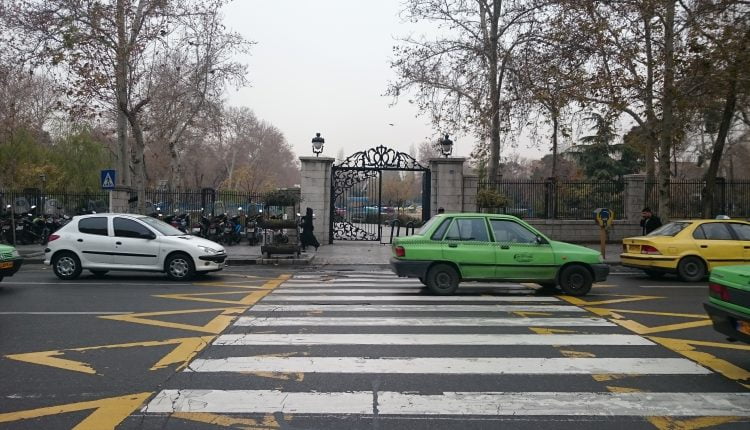
Hiring a Taxi to Tehran Adorian Fire Temple
For those who wish to travel in comfort, taxis are an excellent option. You can hire a taxi from any part of Tehran city, and ask the driver to take you to the “Zoroastrian Fire Temple on Shariati Street.” Most local taxi drivers are aware of the location, ensuring a smooth journey to your destination.
Walking to Tehran Adorian Fire Temple
If you’re staying close to Valiasr or Shariati Street, the temple is within a walkable distance. Not only is it a healthy choice, but a leisurely walk through the bustling streets of Tehran can be an enjoyable experience, offering you a glimpse of the city’s daily life.
So,the Tehran Fire Temple is not just a place of worship; it’s a cultural treasure offering a slice of history. Reaching the temple is pretty straightforward, and with a bit of planning, you’ll find yourself standing in front of this magnificent structure, ready to explore its grandeur.
![]()
Zoroastrianism in Iran: A Snapshot
Zoroastrianism, one of the world’s oldest monotheistic religions, has a deep-rooted history in Iran, dating back over 3000 years. Originating in ancient Persia, it was the state religion until the rise of Islam in the 7th century. However, despite the changing religious landscapes over centuries, Zoroastrianism has managed to survive and continues to be practiced by a small, but resilient community in modern-day Iran.
This faith, founded by the Prophet Zoroaster (or Zarathustra), revolves around the principles of good thoughts, good words, and good deeds, symbolizing the eternal fight between good and evil. Zoroastrians worship in Fire Temples, where sacred fires are kept burning symbolizing God’s light or wisdom. Iran, especially cities like Yazd and Tehran, is home to some of the world’s most significant Zoroastrian Fire Temples.
Today, Zoroastrians contribute to Iran’s rich cultural fabric, keeping their traditions alive, from the Nowruz (Persian New Year) celebrations to old structures outside Tehran which still stand.
In a nutshell, Zoroastrianism forms an integral part of Iran’s historical and religious identity, providing fascinating insights into the nation’s past and present.
Useful Tips
So, when planning your visit, keep these useful tips in mind:
- The temple is open every day from morning to evening, but it’s advisable to check the opening hours before you visit.
- Remember to respect the sanctity of the place. Dress modestly and maintain silence within the temple premises.
- Although the primary language spoken is Farsi, many locals and temple guides speak English, making it easy for international tourists to communicate.
- Finally, don’t forget to carry your camera to capture the beautiful moments you’ll experience at the Tehran Fire Temple.
Now that you know how to reach the Fire Temple, go ahead and enjoy this unique spiritual and cultural encounter in Tehran. Find out about other places to visit in Tehran here!

